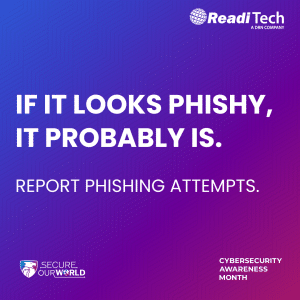Meet Our Team – Haylee
Haylee is our Business Development Specialist on the business sales team. Haylee is one of the business contacts on our sales team. Based out of […]
Security Breach: Google Users Beware
Deep sigh. It seems we’re getting to the point that EVERYTHING is a deep fake. As many Google users have unfortunately learned, you can’t even […]
Stay Safe Online When Using AI
October is #CybersecurityAwarenessMonth! There are a lot of different ways that you can stay safe online. As AI gets more sophisticated and deepfakes get more […]
Outsmart Online Outlaws
October is #CybersecurityAwarenessMonth! There are a lot of different ways that you can stay safe online. Hackers use convincing bait to try to get you […]
Multifactor Authentication
October is #CybersecurityAwarenessMonth! There are a lot of different ways that you can stay safe online. When you enable MFA, you disable the hackers. Even […]
Software Updates
October is #CybersecurityAwarenessMonth! There are a lot of different ways that you can stay safe online. Make sure your software is promptly updated for safety.
Strengthen Passwords
October is #CybersecurityAwarenessMonth! There are a lot of different ways that you can stay safe online. See the three simple tips to strengthen your passwords […]
Tech Times – Q3 | 2024
ReadiTech Tech Times is our quarterly business to business newsletter. Enjoy staying in touch with your local managed IT service provider. In this issue, read […]
A Day in the Life of a ReadiTech Expert | David
The statement “A Day in the Life” can be used to describe a routine or typical happenings of any person or profession. We are starting […]








